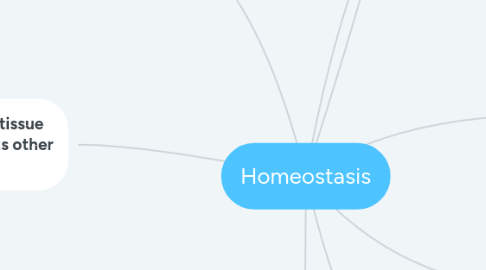Homeostasis
da Ji Hoon Park


1. 20.6: Muscle tissue functions in movement
1.1. Skeletal muscle - Attached to your bones by tendons and is responsible for voluntary movements of your body
1.2. Muscle tissue - The most abundant tissue in most animals.
1.3. Control of Body Temperature and Water Balance
1.4. Cardiac muscle forms the contractile tissue of your heart. It is striated like skeletal muscle
1.5. Smooth muscle - Found in the walls of your digestive tract, arteries, and other internal organs.
2. 20.1 - Structure fits function at all levels of organization in the animal body
2.1. Anatomy is the study of the form of an organism’s structures
2.2. Physiology is the study of the functions of those structures
2.3. A - Cellular Level
2.3.1. B - Tissue Level
2.3.1.1. C - Organ Level
2.3.1.1.1. D - Organ System Level
3. 20.5: Connective tissue binds and supports other tissues
3.1. connective tissue consists of a sparse population of cells scattered throughout an extracellular material called a matrix.
3.2. A - Loose Connective Tissue
3.2.1. B - Fibrous Connective Tissue
3.2.1.1. C - Adipose Tissue
3.2.1.1.1. D - Cartilage
4. 20.4: Epithelial tissue covers the body and lines its organs and cavities
4.1. Epithelial tissues, or epithelia are sheets of closely packed cells that cover your body surface and line your internal organs and cavities.
4.2. A - Simple Squamous Epithelium
4.2.1. B - Simple Cuboidal Epithelial
4.2.1.1. C - SImple Columnar Epithelial
4.2.1.1.1. D - Pseudostratified Ciliated Columnar Epithelial
